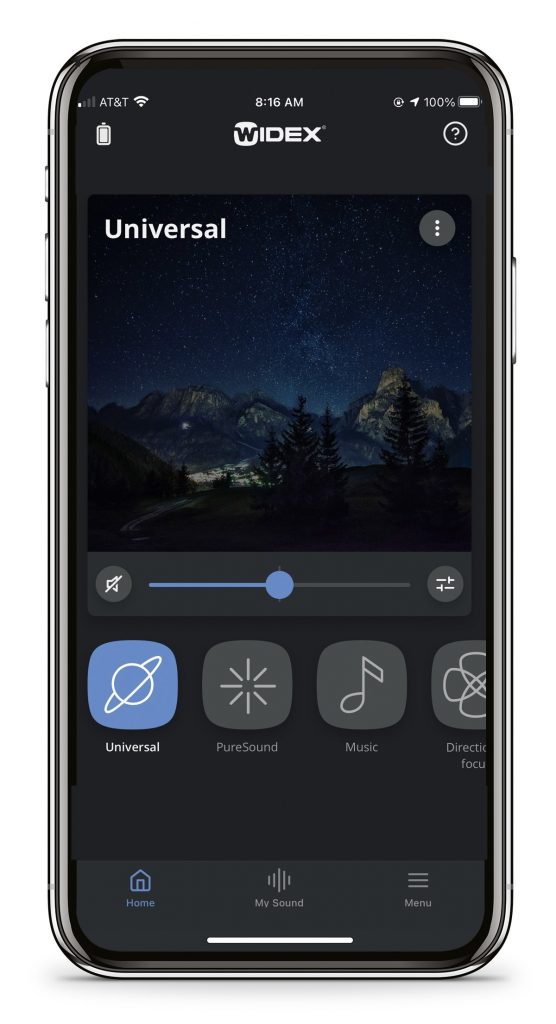For millions of people hearing loss remains an untreated or often ignored condition. Approximately 1 in 5 people globally suffer from some degree of hearing loss, yet for many it needn’t be a problem. We are currently going through a hearing technology revolution, meaning that many of the problems traditionally associated with hearing aids need no longer be an issue for wearers.
The importance of quality hearing
Hearing plays such an extremely important part in our ability to communicate and interact socially and physically. Left untreated hearing problems can have a significant influence upon the way we continue to live our lives.
Hearing loss is degenerative, worsening with age and noise exposure, meaning that for millions of people, untreated hearing loss has the potential to result in future health problems.
A reduction in hearing capacity means that the brain must work harder to process the sounds you can hear. This additional processing can result in the brain becoming overloaded, making you more tired, and meaning your brain has less capacity for memory. Over time these reductions in cognitive ability have been shown to lead to a variety of health concerns including depression, social isolation and even accelerate the onset of age-related conditions like dementia.
From hearing aids to sensory augmentation
Many people with hearing loss suffer with the problem without seeking help. This can be a result of feelings of embarrassment that can come with wearing hearing aids, that have traditionally been clunky and uncomfortable in design, or from people seeing it as ‘just part of the aging process’.
For others, that may have tried hearing aids, the experience often falls short because of failings with the hearing technology, which has in the past resulted in distorted sounds, whistling feedback or discomfort for the wearer.
In recent years improved technology, combined with the application of machine learning and artificial intelligence has resulted in a revolution in hearing technology. Long gone are the days of clunky hearing aids that fail to improve the lives of wearers. Instead, this new breed of hearing tech has taken hearing aids and given them a 21st century makeover.
Manufacturers like Widex, who have a long history in developing cutting-edge hearing technology, have risen to the challenge, meaning that hearing devices are more about sensory augmentation than simply amplifying sounds.
Devices like the Widex MOMENT hearing aids are designed to seamlessly fit within our modern lives providing the wearer with a high degree of comfort while enhancing conversations, phone calls, entertainment and all those daily interactions that rely upon our sense of hearing.
Widex MOMENT and PureSound
We recently tested the WIDEX MOMENT™ hearing aids, devices that bring together decades of research into a wearable specifically designed to reduce many of the common problems associated with conventional hearing technology.
Traditionally, sound processed in a digital hearing aid reaches the eardrum later than sound travelling directly into the ear, resulting in distorted, artificial sound caused by the “comb-filter effect”. This has long been a barrier to hearing aid acceptance.
WIDEX MOMENT PureSound™ is scientifically proven to process sound 8-20 times faster than any other manufacturer, eradicating the comb-filter effect to deliver more natural sound in the hearing aid.
According to company tests WIDEX’s patented ZeroDelay™ technology delivers sound to the eardrum in 0.5ms, compared with competitor averages of 6-8ms.
Widex MOMENT hearing aids also support the ability to stream from Apple iOS and Android devices, allowing a user to experience higher sound quality when listening to music, video chatting or making calls.
Enhanced hearing for all situations
In the past hearing aid wearers have only been able to benefit from enhancement applied across all sounds and situations. This often leads to ambient, or background noise, being boosted just as much as voices, or the other noises that wearers want to hear. This blanket approach often results in annoying sound interference and difficulty processing particular sound-related situations.
Widex have taken this problem and developed MySound – an AI-enhanced approach to sound filtering whereby the technology infers which sounds to enhance based upon the user’s intention.
Instead of being singularly programmed to enhance sound in all situations – with no distinction between what users want to hear and don’t – MySound automatically adjusts based on your intention.
For example, users can select their activity through the Widex MOMENT app, such as dining, then choose their intent, such as concentration. Based on those selections, My Sound draws on tens of thousands of real-life data points and instantly presents customized options.
Widex MOMENT hearing technology in review
In our review, the impact of Widex’s machine learning algorithms and sound processing was instantaneous. Even for someone with no significant hearing loss the difference in quality and reduction in interference from feedback and other ambient noise was considerable.

My Sound is integrated into the Widex MOMENT app and is the home for all the powerful AI personalization Widex offers.
For a true test of the technology, we also asked long-time hearing aid sufferer Mark to trial the Widex MOMENT devices. As someone with moderate hearing loss, Mark falls into the category of people who are aware of their hearing loss, however, due to shortcomings with traditional technology have chosen to avoid using hearing aids.
Prior to the test Mark described his experience of using hearing aids in the past.
“For me the lack of definition in hearing enhancement made using hearing aids virtually impossible. I could hear the sounds of my footsteps louder than many ambient noises, yet when presented with a conversation all I tended to hear was feedback. The persistent whistling, and distortion, were also quite disorientating and at many times more isolating than dealing with the hearing loss. Units in the past have also proven very uncomfortable to wear.”
For the review Mark was set up with a calibrated set of Widex MOMENT hearing aids and provided some quick training in using the accompanying Widex MOMENT app. The results were significant.
“For the first time I can wear hearing aids without really knowing that I am wearing hearing aids” commented Mark. “The impact was instantly noticeable with the sound clarity and lack of feedback, just not being an issue. I have been extremely impressed with the way that the devices have easily fitted into everyday life, something I have not previously experienced with any hearing aids before.”
“Conversations and everyday situations have become much easier, and the devices are so comfortable to wear that I often forget that I have them on.”
According to research from the company other wearers feel the same. In recent tests 95% of wearers felt that the sound produced using the Widex Moment technology was ‘natural’ and ‘clear’ with the sound of their own voice being perceived as ‘natural’ too.
The importance of hearing care
Widex also provides its wearers with a much greater degree of customisation. Using the Widex MOMENT App users can easily customise their devices to fit within particular situations or activities.
In review, we found the app to be extremely intuitive meaning that for day-to-day use there was very little adjustment required. Adapting the settings for specific situations, like listening to music or watching TV was easy, using the pre-calibrated AI-supported programs. The app also allows you to develop your own programs that blend specific hearing qualities for different activities. These are then available for rapid adjustment.
Modern hearing technology has also updated the way that hearing care is provided. In the past wearers would often live with uncalibrated and outdated technology. Now hearing technology providers like Widex provide digitally-supported care.
While wearers are still required to make regular visits to their care provider (in order to monitor any decline in hearing ability), virtual consultations, predictive data analytics and automated calibration, provide wearers with a significantly improved experience.
In fact, the overall hearing aid experience has become something more akin to a modern wearable like the Apple Watch. Technology is allowing users to seamlessly integrate these solutions into their everyday lives with few, or no, complications. The result is a future that will hopefully mean hearing loss becomes a much less debilitating condition to millions than it currently is today.
By Matthew Driver – Editor-in-Chief, The Journal of mHealth





